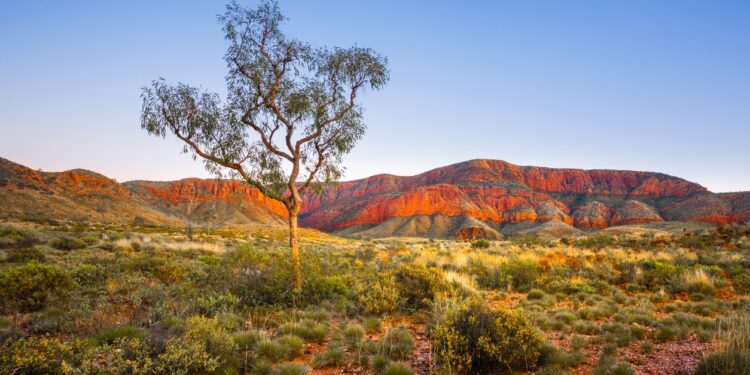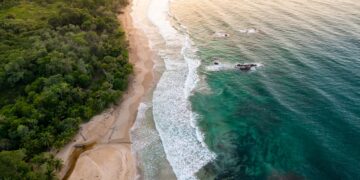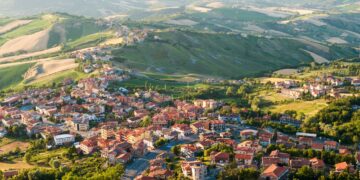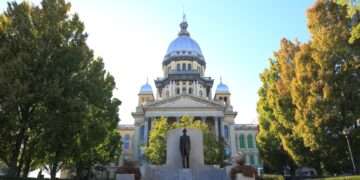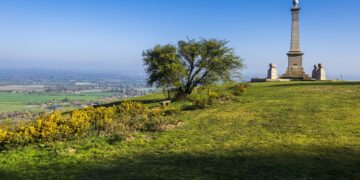The Australian Outback, with its rugged landscapes and vast, open spaces, has been a favorite setting for many filmmakers, authors, and television series creators. This guide will take you on an adventure through the famous filming locations in the Outback, exploring the stories behind the scenes and offering practical travel advice for your journey.
Famous Films Shot in the Australian Outback
The unique landscape of the Australian Outback has provided a dramatic backdrop for numerous films. Over the years, the region has been transformed into the Wild West, alien planets, post-apocalyptic wastelands, and the setting for true stories of survival and adventure.
Here are some of the most noteworthy films shot in the Australian Outback:
- Mad Max Series (1979-2015): Directed by George Miller, this iconic film series revolutionized the post-apocalyptic genre. The desolate yet breathtaking landscapes of the Outback served as the perfect setting for Max Rockatansky’s dystopian adventures.
- Priscilla, Queen of the Desert (1994): Directed by Stephan Elliott, this cult classic follows two drag queens and a transgender woman as they journey through the Outback in their lavender bus, Priscilla. The film showcases the stark contrast between the flamboyant characters and the rugged Outback.
- Rabbit-Proof Fence (2002): Directed by Phillip Noyce, this powerful film tells the true story of three Aboriginal girls who escape from a settlement school and journey through the Outback to return home, guided by the rabbit-proof fence.
- Australia (2008): Directed by Baz Luhrmann, this epic romantic adventure film takes place in Northern Australia during World War II. The film features stunning visuals of the Outback, as the characters drive cattle across the never-ending plains.
- Wolf Creek (2005): Directed by Greg McLean, this horror film is set in the remote Outback, where a menacing killer terrorizes three backpackers stranded at the Wolf Creek Crater.
TV Shows Set in the Australian Outback
The Outback has also served as the backdrop for several popular TV shows, offering a glimpse into the lives of the people who inhabit this harsh yet beautiful landscape. Here are a few examples:
- McLeod’s Daughters (2001-2009): This Australian drama series follows the lives of the McLeod sisters as they run their family’s cattle station in the Outback.
- The Flying Doctors (1986-1992): This popular series is based on the real Royal Flying Doctor Service, which provides medical care to people in the remote regions of the Outback.
- Outback Opal Hunters (2018-present): This reality series explores the world of opal mining in the Australian Outback, following crews of miners in their quest for the elusive gemstones.
Animated Films Set in the Australian Outback
The Australian Outback has also made its mark in the world of animation. Here are some animated films that have brought the Outback to life:
- The Rescuers Down Under (1990): This Disney classic takes viewers on an adventure through the Australian Outback, as two brave mice embark on a mission to save a young boy and a rare golden eagle from a ruthless poacher.
- FernGully: The Last Rainforest (1992): Although not strictly set in the Outback, this film showcases Australia’s unique fauna and flora as it tells the story of a battle between the forces of growth and decay in an ancient Australian rainforest.
- Kangaroo Jack (2003): This adventure comedy centers around two friends from Brooklyn who find themselves lost in the Australian Outback, chasing a kangaroo who has taken one of their jackets along with $50,000 in cash.
Famous Books Set in the Australian Outback
The vast landscapes and harsh conditions of the Australian Outback have provided a canvas for authors to craft compelling narratives. Here are some classic and contemporary books set in the Outback:
Classic Books:
- “The Thorn Birds” by Colleen McCullough: This best-selling novel follows the Cleary family as they live and work on a remote sheep station in the Australian Outback. At the heart of the story is a forbidden love between the family’s youngest daughter and a Catholic priest.
- “A Town Like Alice” by Nevil Shute: This novel tells the story of a young woman who, inspired by her experiences as a prisoner of war during WWII, transforms a desolate Outback community into a thriving town.
- “Picnic at Hanging Rock” by Joan Lindsay: This haunting novel explores the mysterious disappearance of a group of schoolgirls and their teacher during a Valentine’s Day picnic in the Australian bush.
Contemporary Books:
- “The Dry” by Jane Harper: In this gripping crime novel, federal agent Aaron Falk returns to his hometown in the drought-stricken Australian Outback to attend the funeral of his childhood friend, only to find himself investigating a brutal murder.
- “In a Sunburned Country” by Bill Bryson: In this travelogue, Bryson takes readers on a journey through Australia, including the vast expanses of the Outback, sharing fascinating details about the country’s history, culture, and unique wildlife.
- “Dirt Music” by Tim Winton: This novel dives into the raw and intense world of the Australian Outback, weaving a tale of love, grief, and redemption against the backdrop of Western Australia’s harsh landscape.
Exploring Australian Outback Filming Locations – Where to Go
Exploring the filming locations in the Australian Outback is like stepping into a scene from your favorite movie or TV show. Here are some must-visit spots:
- Coober Pedy: Known as the “opal capital of the world”, this mining town in South Australia has been featured in films like “Mad Max Beyond Thunderdome” and “Red Planet”. The town’s unique underground houses are a sight to see.
- Kakadu National Park: This UNESCO World Heritage Site, featured in “Crocodile Dundee”, boasts stunning landscapes, rich Aboriginal culture, and diverse wildlife.
- Kings Canyon: Featured in “The Adventures of Priscilla, Queen of the Desert”, this spectacular canyon in the Northern Territory offers breathtaking views of the rugged Outback.
- Broken Hill: This mining town in New South Wales has served as a filming location for many films, including “Mad Max 2” and “The Adventures of Priscilla, Queen of the Desert”.
- Flinders Ranges: The dramatic landscapes of this South Australian mountain range have featured in films like “Rabbit-Proof Fence” and “The Tracker”.
Where to Sleep in the Australian Outback
Accommodation in the Australian Outback ranges from luxurious resorts to budget-friendly camping sites. Here are some options to consider:
Budget:
- Underground Bed & Breakfast, Coober Pedy: Experience living underground in this unique B&B dug into the side of a hill. Each room maintains a constant temperature, providing a cool respite from the desert heat.
- Alice Springs YHA: This budget-friendly hostel offers comfortable rooms and dorms, a swimming pool, and a self-catering kitchen. It’s a great base for exploring the Outback.
- Kings Canyon Campground: For a more rustic experience, consider camping under the stars at this well-equipped campground, located within walking distance of Kings Canyon.
Luxury:
- Longitude 131 °, Uluru: This luxury resort offers stunning views of Uluru (Ayers Rock) from each of its 15 private tents. Guests can enjoy guided tours, gourmet meals, and spa treatments.
- Bamurru Plains, Mary River National Park: This exclusive safari lodge offers nine safari suites overlooking the floodplains frequented by a variety of wildlife. The lodge offers guided safaris, airboat tours, and bird watching.
- Arkaba, Flinders Ranges: This homestead-turned-wilderness lodge offers a luxurious Outback experience. Guests can enjoy guided walks, wildlife safaris, and scenic flights over the Flinders Ranges.
Where to Eat in the Australian Outback
The Australian Outback offers a range of dining options, from upscale restaurants to casual eateries, many offering traditional Australian dishes.
Budget:
- The Pink Roadhouse, Oodnadatta: This iconic Outback eatery is famous for its “Oodnaburger”, a hefty sandwich packed with meat, cheese, and a variety of fillings.
- Daly Waters Pub, Daly Waters: This historic pub serves classic pub fare, including the “Barra Burger”, made with locally sourced barramundi.
- Tjukayirla Roadhouse, Great Central Road: This remote roadhouse offers hearty meals, including burgers, sandwiches, and traditional Australian meat pies.
Luxury:
- Sounds of Silence, Uluru: This dining experience includes a gourmet buffet dinner served under the stars, with stunning views of Uluru and Kata Tjuta.
- The Restaurant at Wilpena Pound Resort, Flinders Ranges: This restaurant offers a menu of modern Australian cuisine, featuring native ingredients like kangaroo and emu.
- Tali Wiru, Uluru: This open-air restaurant offers a four-course menu of native Australian ingredients, served against the backdrop of Uluru and the distant domes of Kata Tjuta.
Detailed Itinerary Day by Day
Planning a trip to the Australian Outback can be a daunting task, given the vast distances and remote locations. However, with a well-planned itinerary, you can explore the famous filming locations and experience the beauty of the Outback. Here’s a suggested itinerary:
Day 1: Alice Springs
- Start your adventure in Alice Springs, the gateway to the Red Centre.
- Visit the Alice Springs Desert Park to learn about the region’s unique flora and fauna.
- Explore the town’s Aboriginal art galleries and the Museum of Central Australia.
Day 2: West MacDonnell Ranges
- Drive west of Alice Springs to explore the West MacDonnell Ranges.
- Stop by Standley Chasm, Simpsons Gap, and Ellery Creek Big Hole for stunning views and short walks.
Day 3: Kings Canyon
- Drive to Kings Canyon and take the rim walk for breathtaking views of the canyon and the surrounding desert landscape.
Day 4: Uluru and Kata Tjuta
- Head to Uluru-Kata Tjuta National Park.
- Spend the day exploring the base of Uluru and the domes of Kata Tjuta.
- Enjoy the Sounds of Silence dinner under the stars.
Day 5: Coober Pedy
- Drive south to Coober Pedy, the “opal capital of the world”.
- Explore the town’s opal mines and underground homes.
Day 6: Flinders Ranges
- Continue your journey to the Flinders Ranges in South Australia.
- Spend the day hiking and wildlife spotting in the national park.
Day 7: Return to Alice Springs
- Drive back to Alice Springs, stopping at interesting locations along the way.
- Spend the evening relaxing and enjoying a final Outback sunset.
Local Legends and Curiosities About the Australian Outback
The Australian Outback is steeped in folklore, mysteries, and intriguing tales that have captivated the imaginations of writers and filmmakers. Here are some notable ones:
- The Min Min Light: This unexplained nocturnal light, which is said to follow travelers in the Outback, has been attributed to everything from UFOs to atmospheric gases.
- The Lasseter’s Reef: According to legend, Harold Lasseter discovered a massive gold reef in the Outback in the early 20th century, but the location was lost, and numerous expeditions have failed to find it.
- The Bunyip: This mythical creature from Aboriginal folklore is said to lurk in swamps, billabongs, and waterholes. Descriptions vary, but it’s often depicted as a starfish-like creature.
- Cryptid Creatures: The Outback is said to be home to numerous cryptid creatures, such as the Yowie (Australia’s Bigfoot) and the Thylacine (Tasmanian Tiger), which is officially extinct but is still reported to be seen in the Outback.
Hidden Gems in the Australian Outback
While the iconic landmarks of the Outback are well-known, there are many lesser-known attractions that offer unique experiences:
- The Underground Town of Coober Pedy: Known as the “opal capital of the world”, Coober Pedy is a town where more than half the population lives underground to escape the extreme desert heat. The town has an underground church, museum, and even a golf course!
- The Painted Desert, South Australia: This stunning landscape of colorful hills was once the floor of an ancient inland sea. It’s an ideal place for photography, especially at sunrise or sunset when the colours are most vibrant.
- The Pinnacles, Nambung National Park, Western Australia: These ancient limestone formations rising out of the desert in Nambung National Park are a sight to behold. The park is also home to an array of wildlife, including kangaroos and emus.
- The Devil’s Marbles, Northern Territory: These huge granite boulders, scattered across a wide, shallow valley, are a sight to behold. According to Aboriginal belief, they are the eggs of the Rainbow Serpent.
What to Pack for a Trip to the Australian Outback
Packing for a trip to the Australian Outback requires careful thought. Here are some essentials:
- Clothing: Pack lightweight, breathable clothing for the hot days and warm layers for the cooler evenings. A wide-brimmed hat, sunglasses, and sunscreen are must-haves to protect against the sun.
- Footwear: Sturdy walking shoes or hiking boots are essential for exploring the rugged Outback terrain.
- First Aid Kit: Include band-aids, antiseptic wipes, tweezers (for removing splinters or ticks), and any personal medication.
- Hydration: The Outback can be extremely hot, so carry plenty of water. A hydration pack can be helpful for longer walks or hikes.
- Maps and Guides: While many areas have cell phone coverage, it’s a good idea to carry physical maps and guides as a backup.
- Insect Repellent: This can help protect against flies and mosquitoes, which can be numerous in the Outback.
- Camera: Don’t forget your camera to capture the breathtaking landscapes and unique wildlife of the Outback!
Transportation Tips for Getting Around the Australian Outback
The vast distances and remote locations in the Australian Outback present unique transportation challenges. Here are some tips:
- Car Rental: A 4WD vehicle is recommended for exploring the Outback. Make sure to check with the rental company about any restrictions on driving on unsealed roads.
- Road Conditions: Be aware that many roads in the Outback are unsealed and can be challenging to drive on. Always check the current road conditions before setting out.
- Fuel and Supplies: Petrol stations can be few and far between in the Outback, so always top up your fuel when you have the chance. Also, carry plenty of water and food supplies.
- Wildlife: Be aware of wildlife on the roads, particularly kangaroos, which can be active at dawn and dusk.
- Guided Tours: Joining a guided tour can be a stress-free way to explore the Outback, with experienced guides who know the terrain and can share their knowledge of the region’s history and culture.
Remember to always tell someone where you’re going and when you expect to return, and never underestimate the harsh conditions of the Outback.
Conclusion
Exploring the Australian Outback, with its iconic filming locations and fascinating history, is an adventure like no other. Whether you’re a film buff, an avid reader, or simply a traveler looking for an unforgettable journey, the Outback offers a unique experience that is both challenging and rewarding. So pack your bags, hit the road, and discover the cinematic landscapes of the Australian Outback!


